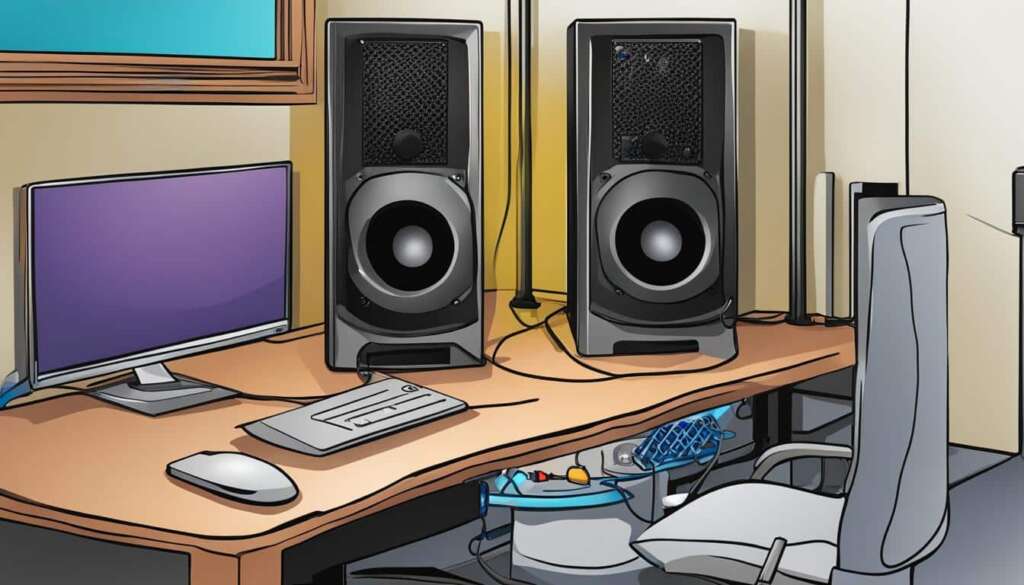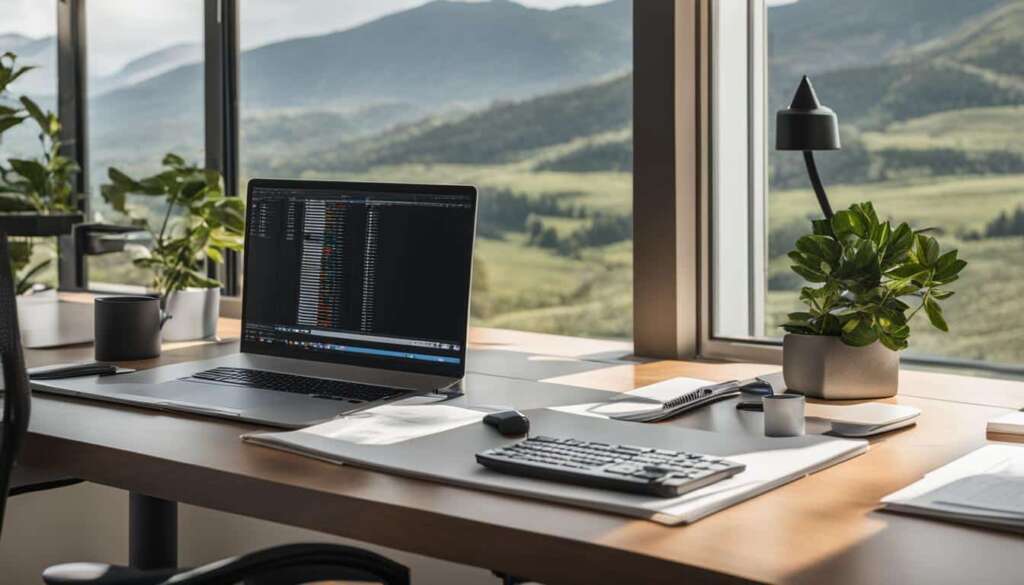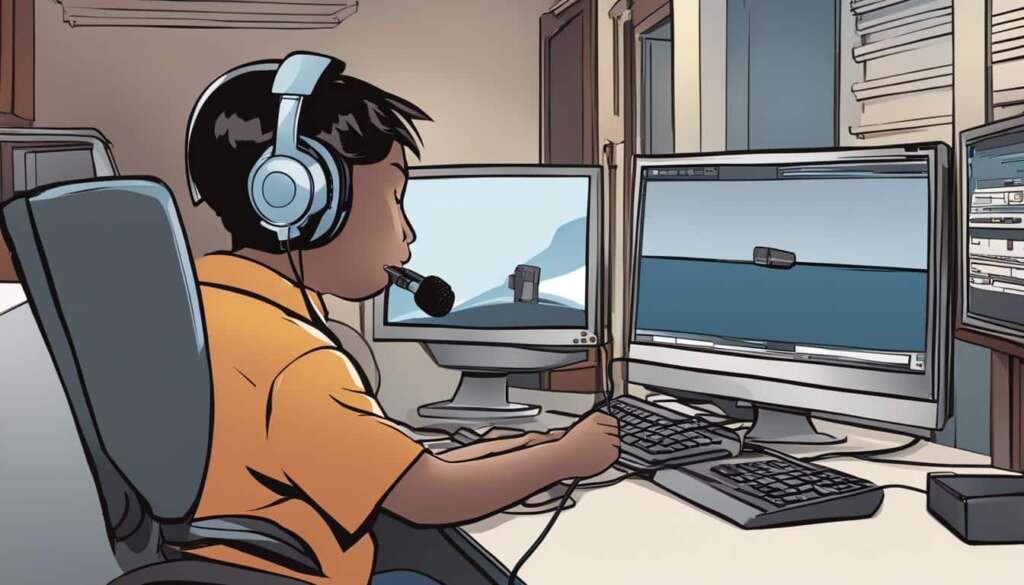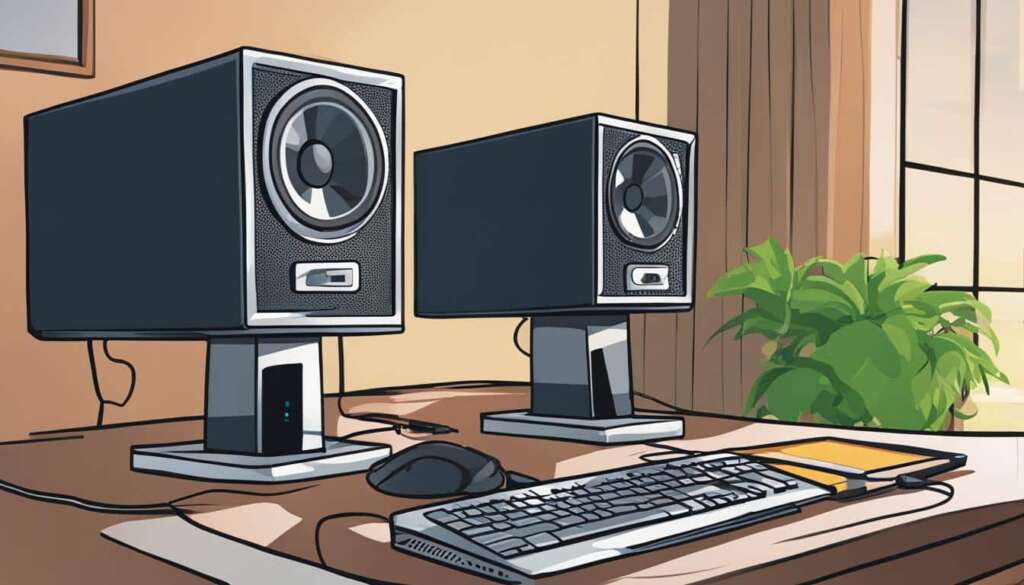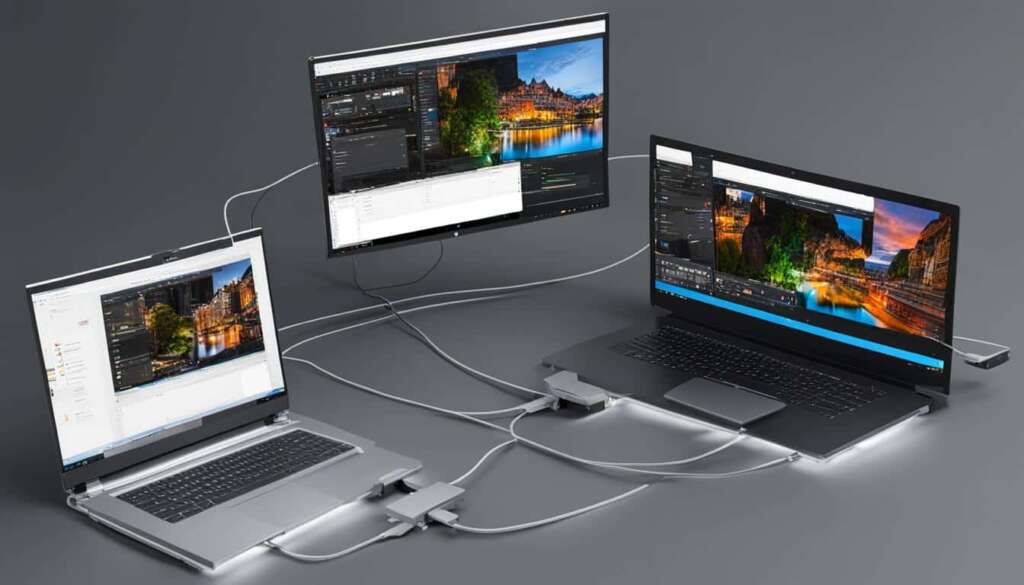Table of Contents
When it comes to connecting speakers to your PC, knowing where to plug them in can make a big difference in audio performance. Whether you have portable speakers, USB speakers, or a laptop, understanding the right connections is essential for optimal sound quality.
Most portable speakers with a volume knob will have a 3.5mm mini plug that connects to your computer’s audio output jack, typically colored lime green. Simply plug the mini plug into the audio jack, and you’re good to go.
If your speakers require power, make sure to connect the power cord to a wall outlet or surge protector outlet to ensure they have the necessary power supply.
Some motherboards may have additional connections for different types of speaker setups, such as center/subwoofer speakers or surround sound speakers. Be sure to consult your motherboard’s manual for specific instructions.
USB speakers can be easily connected by plugging the USB connector into an open USB port on your computer. This simplifies the setup process and eliminates the need for separate power cords.
Laptop users can connect speakers directly into the headphones port, which is typically located on the side of the laptop. This allows for quick and easy access to enhanced audio without the need for additional connections.
If your speakers have a subwoofer, it’s important to connect the right speaker to the subwoofer and ensure that the subwoofer is turned on. This will provide a more immersive audio experience.
Lastly, it is safe to plug in and disconnect speakers while your computer is on. After connecting the speakers, adjust the volume and test them by playing a sound or video file to confirm that everything is working correctly.
By following these simple steps, you can easily connect your speakers to your PC and enjoy high-quality audio for all your media needs.
Connecting Speakers to PC: Traditional Audio Connections
When it comes to connecting speakers to a PC, there are various traditional audio connections to consider. These connections allow for the seamless integration of speakers with your computer system, ensuring optimal audio performance. In this section, we will explore some of the most common methods of connecting speakers to a PC using traditional audio connections.
Rear Speaker Jacks
One of the standard setups for plugging in stereo speakers to a PC is through the rear speaker jacks. These are located on the back of the computer and serve as the primary audio output jacks. To connect your speakers, simply plug them into the appropriate jacks using the provided cables. Rear speaker jacks are typically colour-coded in lime green, making it easy to identify the audio output ports.
S/PDIF Connectors
For high-end audio systems, S/PDIF (Sony/Phillips Digital Interconnect Format) connectors come into play. These connectors utilize special optical cables for both input and output, delivering superior audio quality. If your PC and speakers support S/PDIF connections, you can take advantage of this advanced audio setup for a truly immersive sound experience.
DVD Adapter Card
In some cases, particularly with older PCs, you may need to connect your speakers to a DVD adapter card instead of the standard I/O panel on the computer. This adapter card provides the necessary audio connections for your speakers, ensuring compatibility and functionality.
Front Speaker Jacks
Many modern PCs feature convenient front speaker jacks. These allow for easy connection of headphones and speakers without the need to reach around to the back of the computer. Simply plug your speakers into the front speaker jack, and you’re ready to enjoy your audio.
USB Speakers
USB speakers offer a hassle-free way to connect speakers to a PC. These speakers can be directly plugged into any available USB port on your computer. The USB connection not only provides audio playback but also powers the speakers, eliminating the need for an additional power source. This makes USB speakers ideal for those looking for a simple, plug-and-play solution.
Built-in Monitor Speakers
In some cases, flat-panel monitors come equipped with built-in speakers. These speakers can be connected to either the rear speaker jacks on the PC or through a USB connection. Check your monitor’s user manual to determine the recommended method for connecting the built-in speakers.
When connecting speakers to your PC, it’s essential to ensure they are plugged into the correct audio jack. Most commonly, the audio output jacks on PCs are colour-coded green, making it easy to identify the proper connection. Plugging your speakers into the correct jack ensures the optimal transmission of audio signals and prevents any potential audio issues.
Take a look at the table below for a quick summary of the traditional audio connections discussed in this section:
| Audio Connection | Method |
|---|---|
| Rear Speaker Jacks | Plug stereo speakers into rear audio output jacks |
| S/PDIF Connectors | Use special optical cables for high-end audio systems |
| DVD Adapter Card | Connect speakers to a DVD adapter card instead of I/O panel |
| Front Speaker Jacks | Conveniently connect headphones and speakers from the front of the PC |
| USB Speakers | Plug speakers directly into an available USB port |
| Built-in Monitor Speakers | Connect built-in speakers to rear speaker jacks or USB port |
Connecting Speakers to PC: Bluetooth and Troubleshooting
Bluetooth speakers provide a convenient wireless option for connecting speakers to your PC. To establish a connection, ensure that both your computer and the speakers are Bluetooth enabled. On your PC, check the Bluetooth settings to ensure it is turned on. Next, put the speakers into pairing mode and use the PC’s Bluetooth settings to add the speakers as a Bluetooth device. Test the speakers by playing sound or adjusting the sound settings on your computer to confirm they are connected and functioning correctly.
If you encounter any issues when connecting Bluetooth speakers to your PC, consult the manual provided with the speakers for specific troubleshooting instructions. It’s also important to gather the necessary materials such as appropriate audio cables and power cords when connecting speakers to your PC. Make sure to carefully follow the instructions for your specific speaker type, whether they use cables or Bluetooth, to ensure a successful connection.
By following these steps and troubleshooting any potential issues, you can easily connect your Bluetooth speakers to your PC, enhancing your audio experience and enjoying hassle-free sound.
FAQ
How do I connect speakers to my PC?
Connect speakers with a 3.5mm mini plug to the audio output jack on your PC. USB speakers can be connected by plugging the USB connector into an open USB port. For laptops, plug speakers into the headphone port. Bluetooth speakers can be connected by pairing them with your PC’s Bluetooth settings.
Where do I plug in speakers on my PC for optimal audio performance?
Most portable speakers with a volume knob have a 3.5mm mini plug that connects to the audio output jack on your PC, usually colored lime green. For traditional audio connections, use the rear speaker jacks on the back of your PC. USB speakers can be plugged into any available USB port. Bluetooth speakers require pairing with your PC’s Bluetooth settings.
Can I connect speakers to different speaker setups on my PC?
Some motherboards have additional connections for different speaker setups, such as center/subwoofer speakers or surround sound speakers. Check your PC’s I/O panel for these connections.
How do I connect USB speakers or headphones to my PC?
Simply plug the USB connector on the speakers or headphones into an available USB port on your PC.
What if my speakers have a subwoofer?
When connecting speakers with a subwoofer, make sure to connect the right speaker to the subwoofer and ensure the subwoofer is turned on.
Is it safe to plug in and disconnect speakers while the computer is on?
Yes, it is safe to plug in and disconnect speakers while the computer is on.
How do I test if my speakers are connected and working correctly?
After connecting the speakers, adjust the volume and test them by playing a sound or video file.
What are the traditional audio connections on a PC?
Traditional audio connections on a PC include rear speaker jacks for plugging in stereo speakers, S/PDIF connectors for high-end audio systems, and front speaker jacks for convenient connection of headphones and speakers.
Can I connect speakers to a flat-panel monitor?
Yes, some flat-panel monitors have built-in speakers that can be connected to either the rear speaker jacks or the USB port on your PC.
What if I encounter issues connecting my speakers to my PC?
If you encounter any issues, refer to the manual provided with your speakers for specific instructions. Additionally, ensure that both your PC and speakers are Bluetooth enabled and check the Bluetooth settings on your PC to ensure it is turned on.
Are specific audio cables or power cords necessary for connecting speakers to a PC?
Yes, gather the necessary materials, such as the appropriate audio cables and power cords, when connecting speakers to your PC. Follow the instructions for the specific type of speakers you have to ensure a successful connection.

